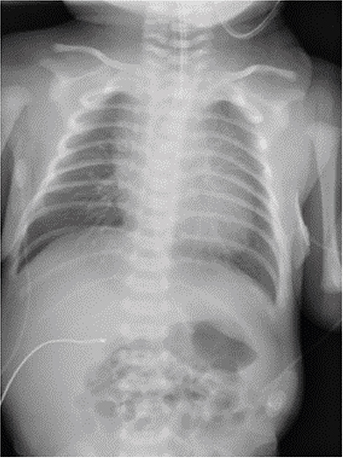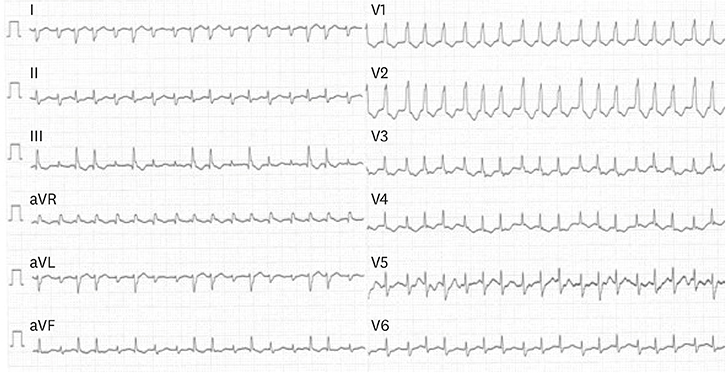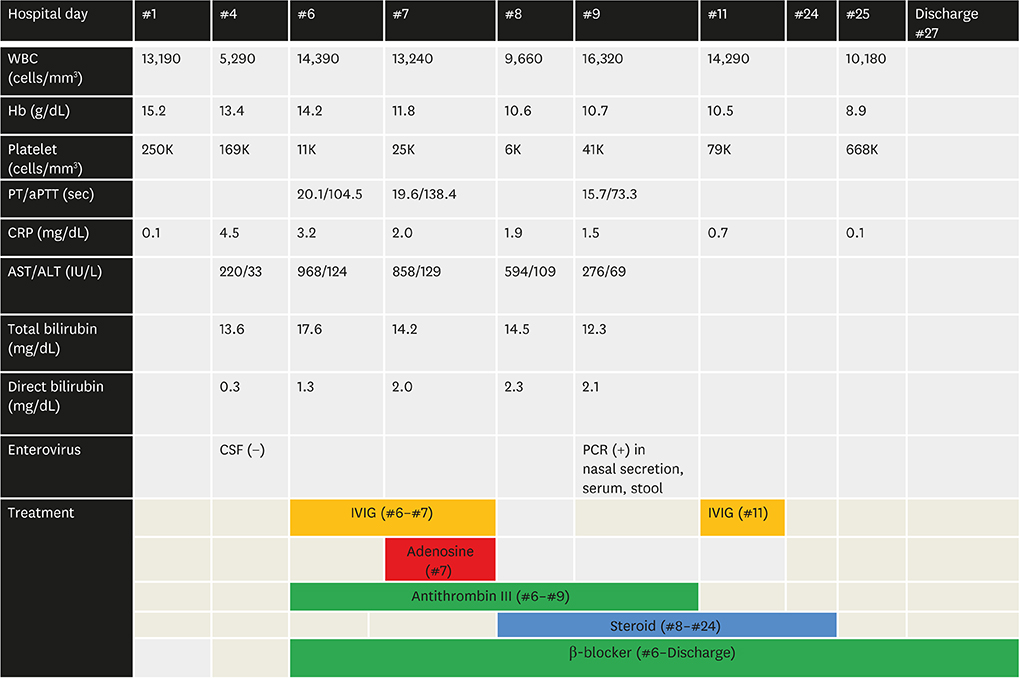Pediatr Infect Vaccine.
2019 Dec;26(3):199-205. 10.14776/piv.2019.26.e16.
Early Detection and Successful Treatment of Vertically Transmitted Fulminant Enteroviral Infection Associated with Various Forms of Arrhythmia and Severe Hepatitis with Coagulopathy
- Affiliations
-
- 1Department of Pediatrics, Cheil General Hospital & Women's Health Care Center, Dankook University College of Medicine, Seoul, the Republic of Korea.
- 2Department of Pediatrics, College of Medicine, The Catholic University of Korea, Seoul, the Republic of Korea. kosymd@unitel.co.kr
- KMID: 2466465
- DOI: http://doi.org/10.14776/piv.2019.26.e16
Abstract
- Enteroviral infections are common in neonates. One important infection pathway is vertical transmission from an infected mother to her neonate. Here, we report the early detection and successful treatment of a vertically transmitted fulminant enteroviral infection associated with myocarditis and hepatitis. The patient had a sudden onset of high fever on the fourth day of life and developed severe, rapidly progressing symptoms of disseminated intravascular coagulopathy (DIC), hepatitis, and myocarditis accompanied by tachyarrhythmia. As it was the peak season for enteroviral infections and both the mother and the patient's 36-month-old sibling had a high fever around the time of delivery, we suspected an enteroviral infection. Thus, we initiated prompt evaluation of enteroviral infection, as well as close observation and intensive care of the neonate. We strongly recommend evaluation for the possibility of vertical enterovirus infection in neonates when the mother is suspected of having a viral infection (e.g., high fever and negative results from bacterial infectious studies) around the time of delivery and when the neonate shows some early symptoms of infectious diseases such as thrombocytopenia, DIC, hepatitis, and myocarditis. Early detection of enteroviral infections and prompt implementation of proper treatment are key to reduce the risk of complications and mortality associated with enteroviral infections in neonates.
MeSH Terms
Figure
Reference
-
1. Tebruegge M, Curtis N. Enterovirus infections in neonates. Semin Fetal Neonatal Med. 2009; 14:222–227.
Article2. Zaoutis T, Klein JD. Enterovirus infections. Pediatr Rev. 1998; 19:183–191.
Article3. Schlapbach LJ, Ersch J, Balmer C, Prêtre R, Tomaske M, Caduff R, et al. Enteroviral myocarditis in neonates. J Paediatr Child Health. 2013; 49:E451–E454.
Article4. Yen MH, Huang YC, Chen MC, Liu CC, Chiu NC, Lien R, et al. Effect of intravenous immunoglobulin for neonates with severe enteroviral infections with emphasis on the timing of administration. J Clin Virol. 2015; 64:92–96.
Article5. Banjac L, Nikcević D, Vujosević D, Raonić J, Banjac G. Tachycardia in a newborn with enterovirus infection. Acta Clin Croat. 2014; 53:102–106.6. Bryant PA, Tingay D, Dargaville PA, Starr M, Curtis N. Neonatal coxsackie B virus infection-a treatable disease? Eur J Pediatr. 2004; 163:223–228.
Article7. Kaga A, Katata Y, Suzuki A, Otani K, Watanabe H, Kitaoka S, et al. Perinatal coxsackievirus B3 infection with transient thrombocytopenia. Tohoku J Exp Med. 2016; 239:135–138.
Article8. Haston JC, Dixon TC. Nonpolio enterovirus infections in neonates. Pediatr Ann. 2015; 44:e103–7.
Article9. Takahashi H, Tsukamoto K, Takahashi S, Nakamura T, Ito Y, Kaneko M, et al. Reversible atrioventricular block and junctional ectopic tachycardia in coxsackievirus B3-induced fetal–neonatal myocarditis without left ventricular dysfunction. AJP Rep. 2011; 1:37–42.
Article10. Batra AS, Chun DS, Johnson TR, Maldonado EM, Kashyap BA, Maiers J, et al. A prospective analysis of the incidence and risk factors associated with junctional ectopic tachycardia following surgery for congenital heart disease. Pediatr Cardiol. 2006; 27:51–55.
Article11. Anderson BR, Silver ES, Richmond ME, Liberman L. Usefulness of arrhythmias as predictors of death and resource utilization in children with myocarditis. Am J Cardiol. 2014; 114:1400–1405.
Article12. Abzug MJ, Michaels MG, Wald E, Jacobs RF, Romero JR, Sánchez PJ, et al. A randomized, double-blind, placebo-controlled trial of pleconaril for the treatment of neonates with enterovirus sepsis. J Pediatric Infect Dis Soc. 2016; 5:53–62.
Article
- Full Text Links
- Actions
-
Cited
- CITED
-
- Close
- Share
- Similar articles
-
- Vertically Transmitted Severe Coxsackievirus B Infection in Four Preterm Twins Presented
- Successful Treatment of Neonatal Herpes Simplex Infection Presenting as Fulminant Hepatitis with Acyclovir and Peritoneal Dialysis
- Factors influencing the severity of acute viral hepatitis A
- A Case of Vertically Transmitted Neonatal Hepatitis B with Pancytopenia
- Overview of Hepatitis B Virus associated with Fulminant Hepatic Failure in Korea





